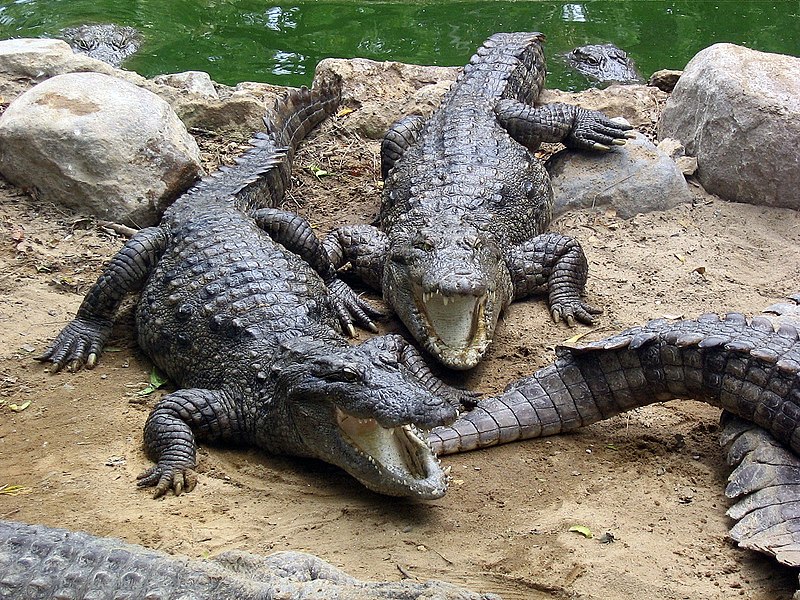
Natural History
Marsh Crocodiles are aptly named – despite being powerful swimmers, they favor the calm, plant-choked waters of swamps and marshes over swift-moving rivers (the species name, “palustris”, is a reference to their habitat).
Their range extends from Bangladesh, Nepal and Pakistan through India and Sri Lanka.
A Surprise
A single population of Muggars holds on in a country not known for its crocodiles, Iran. The Iranian Muggars live in the southeastern part of the country, which is the species western-most limit. The most recent survey of this group documented 150 individuals, but estimates put the total population at 300 or so.
Dammed river sections and village ponds account for an important part of this population’s habitat – one large reservoir is even protected as a breeding site. Muggars spend periods of cold and hot weather in long, self-dug burrows, and fishes form the bulk of their diet. Water birds, snakes and other animals are taken opportunistically.
Fortunately, Muggars are not hunted in Iran and are reportedly viewed as culturally important animals. They are protected as an endangered species and a national management plan, containing research, educational, captive breeding and ecotourism components, is in place.
Muggars at the Zoo – A Vexing Problem
While working at the Bronx Zoo, I cared for a group of these most fascinating reptiles but unfortunately the exhibit was not conducive to breeding.
Sadly, a number of visitors tossed coins into the crocodiles’ open mouths (crocodiles cool off by lying with their jaws open, in order to expose the blood vessel-laden tongue to the air) and over the years the animals were slowly poisoned by zinc and other metals as the coins were digested. We lost several animals, but others recovered and were re-located to zoos with covered exhibits (or better-behaved visitors!).
Further Reading
IUCN Report on Marsh Crocodile populations, natural history and conservation recommendations.
Check out the size of the Marsh Crocodiles in this video – easy to see why reintroductions must be carefully planned so that crocs and people do not meet up!
Please write in with your questions and comments.
Thanks, until next time,
Frank Indiviglio
Basking Muggars image referenced from wikipedia and originally posted by Kminoj
Marsh Crocodile image referenced from wikipedia and originally posted by Hericks
The Muggar or Marsh Crocodile – Encounters in Captivity and the Wild – Part 2
That Reptile Blog























